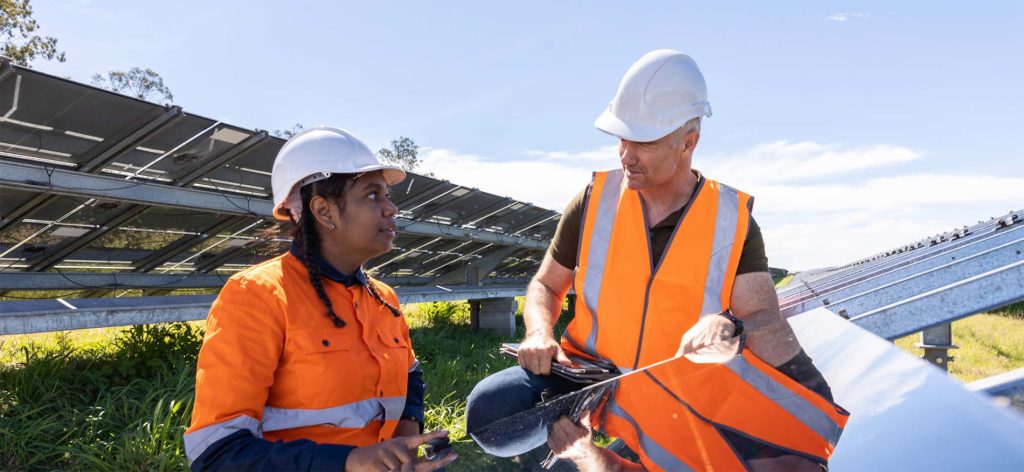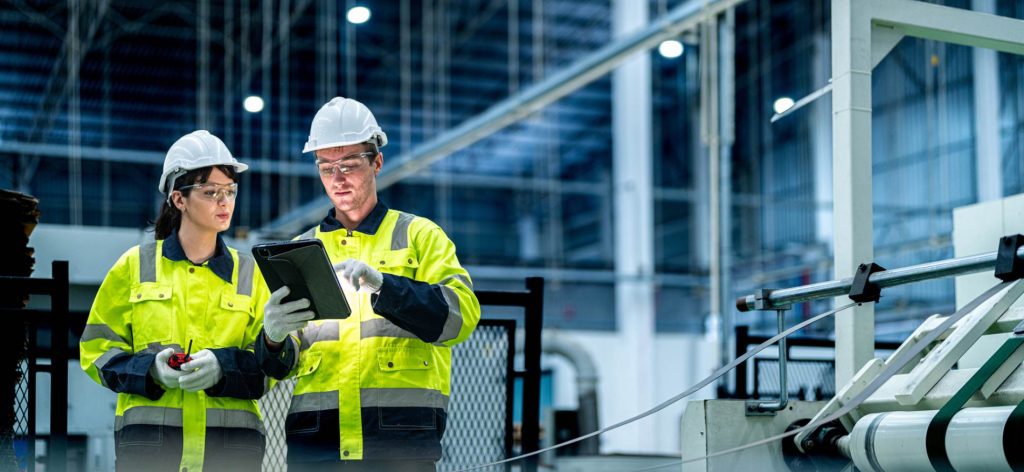Safety Month: 5 Ways to Prioritise Safety in the Utilities Industry in Australia
According to a 2024 report by Safe Work Australia, in 2023 there were 139,000 serious injury claims across all industries, with 200 worker fatalities reported. Although the fatality rate has decreased by 19% (from 1.7 fatalities per 100,000 workers) over the last decade, it has remained relatively stable in recent years, calling for a reminder…
According to a 2024 report by Safe Work Australia, in 2023 there were 139,000 serious injury claims across all industries, with 200 worker fatalities reported. Although the fatality rate has decreased by 19% (from 1.7 fatalities per 100,000 workers) over the last decade, it has remained relatively stable in recent years, calling for a reminder to prioritise safety in the workplace.
The Australian Utilities Industry’s Work Health and Safety Snapshot
The 2024 report stated that injury claims cost the Electricity, Gas, Water, and Waste Services industry a median of $20,400. The industry also ranked among the top 4 industries for highest fatalities, with a rate of 2.5 fatalities per 100,000 workers in 2023.
The data shows that the most common causes of workplace fatalities across all industries were vehicle incidents (42%) and being hit by moving objects (12%). These two factors alone account for over half of worker fatalities.
While the majority of workers stay safe on the job, certain roles in the utilities industry come with elevated risks. Nearly 80% of worker fatalities due to falls from heights occurred among labourers (41%), technicians and trades workers (21%), and machinery operators and drivers (17%). Roles such as labourers, technicians, trades workers, and machinery operators accounted for 55.8% of serious injury claims in 2023.
While this data highlights the unique challenges of working in utilities, it also presents an opportunity for companies to continue improving safety measures and lead the way in protecting their teams. Mitigating these risks is crucial and fortunately, there are many actions businesses in the utilities sector can take to prevent many injuries with proactive measures.
Key actions utilities companies can take to create a safer working environment for their workers
Regular safety training, proper equipment maintenance, and up-to-date safety gear can help companies safeguard the industry’s high-risk roles. By investing in ongoing training and fostering a safety-first culture, utilities companies can protect their workforce while enhancing overall productivity. Below is a deeper dive.
1. Regular Safety Audits and Training
By conducting regular safety audits and updating training protocols, companies can stay ahead of potential risks. Whether it’s keeping up with new safety technologies or retraining teams on best practices, staying proactive is key.
It is also useful to tailor safety initiatives to the specific risks that workers face. Whether it’s preventing falls from heights, ensuring safe operation of machinery, or reducing risks on the road, companies can address these challenges through better training and awareness.
2. Investing in Maintenance
Regular inspections help identify potential hazards before they lead to accidents, ensuring that machinery is operating properly, and vehicles are safe to use. By conducting routine inspections, companies can catch wear and tear, faulty components, or other issues early on, minimising downtime and protecting workers from unnecessary risks.
A proactive approach to maintenance not only extends the life of equipment but also plays a critical role in preventing workplace injuries and ensuring compliance with safety standards.
3. Making it Easier for Employees to Access PPE
As a PCBU, you are responsible for ensuring PPE is appropriate and fits correctly. You can either provide PPE directly or offer a PPE allowance. Sebastian Leeder, Fuse’s National Manager of Infrastructure & Utilities, states that PPE allowances are great incentives that help to attract candidates when businesses are trying to fill job vacancies. He says, “PPE is often considered an inconvenient expense to candidates, and many will search for jobs elsewhere if they are required to source PPE out of their own pocket.” However, even with an allowance, it’s still your duty to ensure that the equipment fits and protects workers effectively.
Remember, PPE is essential but should only be relied on as a last resort. It is considered one of the least effective control measures and should only be applied after higher-level controls, such as eliminating or substituting hazards, have been attempted.
When to Use PPE:
- After all other safety controls have been put in place
- As an interim measure while higher-level controls are being reviewed or implemented
- As a back-up to complement other safety controls
4. Promoting a Culture of Safety
When employees feel empowered to report hazards and work together to uphold safety standards, accidents become less likely. Companies should encourage open communication about safety and involve employees in safety planning.
To enhance our safety culture and that of our on-hired workforce, we’ve created a Safety Hub, designed specifically for industries like utilities, to provide access to safety resources, training modules, and updates on the latest safety regulations and protocols.
By incorporating our Safety Hub into our safety strategy, we ensure that our workforce is consistently informed and trained on the latest safety measures.
5. Partnering with Recruitment Experts to Find Safety-Trained Employees
Specialised recruitment agencies can help utilities companies find skilled candidates who are not only experts in their fields but also trained to prioritise safety. This ensures businesses are building a workforce that understands the importance of working safely and effectively in potentially hazardous environments.
Recruitment agencies will also provide access to dedicated resources that support workplace safety. For example, many will have dedicated GPs to refer employees to for work-related injury advice. This means that you’re not only getting safety-trained employees, but you’re also getting access to expert medical advice to manage and mitigate injuries effectively if incidents occur.
At Fuse Recruitment, we understand the challenges the utilities sector faces and are committed to helping you build a safer, stronger workforce. With Fuse’s Safety Hub and our specialised recruitment services, you can ensure your team is equipped with the knowledge and skills to stay safe on the job.
If you want to hire skilled professionals or learn more about how Fuse Recruitment can support your business, we’d love to help. Get in touch with us today to discover how we can partner with you in creating a safer, more productive workforce.







